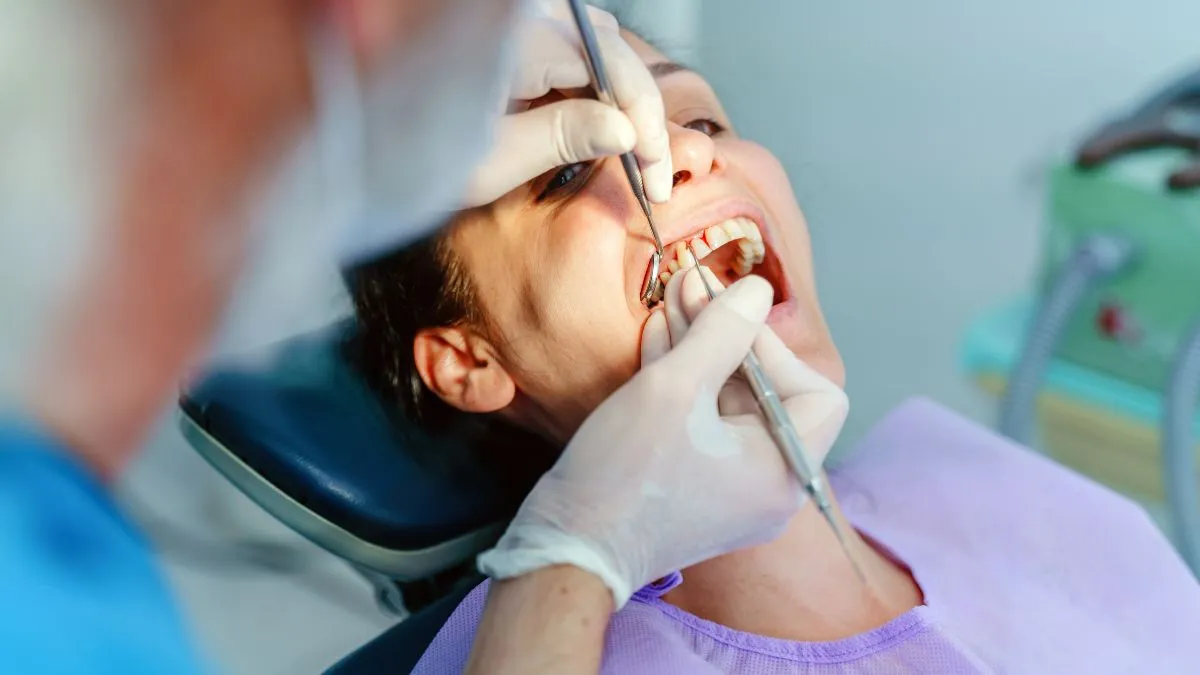- By Bornika Das
- Fri, 02 May 2025 08:24 PM (IST)
- Source:JND
Oral Cancer: Often known as an invisible epidemic, oral cancer has emerged as one of India's most pressing public health challenges. There has been a steady rise in cases, particularly among younger adults and non-smokers. Traditionally, oral cancer was linked to tobacco and alcohol use, however, there are additional causes that lead to oral cancer. In recent times, people between the ages of 40 and 59 years old are suffering from oral cancer, affecting their personal as well as economic life.
According to the latest GLOBOCAN data, oral cavity cancers, in addition to the cancers of the lip, accounted for approximately 1,413,316 new cases and over 79,979 deaths in India in 2022, making it the country with one of the highest burdens globally. The 5-year prevalence stands at 370,106 cases, a stark reminder of the substantial number of individuals currently living with the disease. In a conversation with Jagran English, Dr Harshveer Singh Malhi, MD, Head of Oncology Medical Affairs- Merck Healthcare, stated how oral cancer has become a rising concern and listed the causes of it. He also stated how timely diagnosis and lifestyle adjustments can help prevent the risk of oral cancer.
Causes Of Oral Cancer
India faces a distinct and worrying profile of risk factors, unlike many Western nations. Cultural habits such as the widespread use of smokeless tobacco, such as gutka, pan masala, and khaini, betelnut combined with alcohol consumption, poor oral hygiene, and malnutrition, fuel the oral cancer epidemic here.
Dr Harshveer Singh states, "What is even more alarming is the rising incidence among younger adults, driven by early exposure to risk factors. Notably, oral cancer is the most common cancer among Indian men, accounting for up to 16% of all cancer cases." In a country where more than one-third of cancers are attributed to tobacco use, urgent action is not just necessary, “it is critical.”
Symptoms Of Oral Cancer
Often, oral cancer starts silently, with a small ulcer that doesn’t heal, a persistent patch inside the mouth, difficulty swallowing, or an unusual lump. These symptoms are easy to dismiss but dangerous to ignore. Over 60% of oral cancer cases in India are diagnosed at Stage 3 or 4, when treatment becomes more complicated and survival rates drop drastically. Thus, early detection upon identifying the symptoms helps reduce the risk of oral cancer.
-1746197601700.jpg)
Oral Cancer Causes And Detection (Image Credits: Canva)
How Oral Cancer Is Detected?
Today, detecting oral cancer has become easier and faster than ever. Visual oral examinations by trained health workers, brush biopsies, and cost-effective screening tools are increasingly accessible even in rural areas. Dr Harshveer Singh mentions, "New-age technologies like autofluorescence devices, AI-driven diagnostic tools, and salivary diagnostics are making early identification smarter and more precise. Promoting self-examinations, like a simple two-minute check, can be a path-breaker in catching early warning signs of oral cancer, but the battle goes far beyond awareness."
Regular oral screenings, public-private partnerships, school-based awareness programs, and targeted rural outreach must become the cornerstone of our national strategy. In a significant move outlined in the Indian Union Budget 2025-26, the government has proposed the establishment of day-care cancer centres in district hospitals across the country. With 200 centres set to be operational by 2025-26, these facilities aim to play a crucial role not only in improving access to treatment but also in facilitating early diagnosis and intervention for all types of cancers, including oral cancers.

